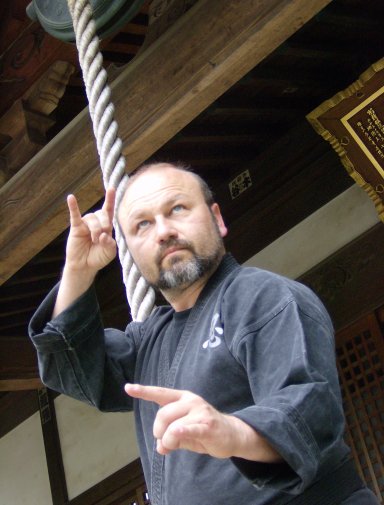
by Jeffrey M. Miller
Director
Warrior Concepts Int'l, Inc
Many people, including karate and so-called self-defense teachers really aren't sure where to begin when it comes to mastering the ability for protecting yourself against a real-world violent attacker. This article takes a look at the two-fold approach that I suggest for clients who are serious about getting through a street attack.
To explore the common approach to martial arts and self-defense instruction, the typical approach appears to be to simply get a few of tricks and techniques, earn some cool-looking belt or maybe a certificate of some kind, and presto, you're set. Right?
If that's true, then why are so many trained individuals becoming victims to real attackers? Why, if this stuff works in the dojo or self-defense class, are their infalible skills failing miserably on the street, when dealing with real-world attacks thrown by serious, real-world assailant?
There are lots of possibilities but I think the primary one is that, for the most part, these classes are simply a case of the blind leading the blind. What that means is that individuals, who have no experience with dealing with violence, are attempting get something from self-defense instructors who, themselves, are lacking street experience at overcoming and winning real world attack situations.
So, what do you need to survive a real self-defense situation?
My own view on the whole self-defense learning curve, and what I teach my clients, is two fold.
Initially, be trained in as many options as possible so that you can react in different situations and against a variety of assailants.
Also, in the moment, when an attack is happening, the defender must be able to respond to and manage the violence itself - no matter where it comes from or what's behind it.
Like a double-edged sword, each side is critical if the practitioner is to be truly successful. The first part, your class training should arm you with not just tested skills, but an understanding of the critical principles and concepts that are being taught by the classroom models. In this way, you won't have to rely the taught techniques themselves, but you will be able to operate during the attack, not against a stylized attack but, against the actual assault your attacker is throwing at you. Several of these foundational ideas include:
- 1) Shielding
2) Strategic angling and positioning
3) Timing and responsiveness
4) Proper distance
5) and others
The second is associated with attitude, or "heart." Regardless of how sure you are, or feel in class with your friends, peers, and junior students, what matters in a real self-defense situation is how you respond and deal with the pure, animalistic violence being thrown at you by a serious, angry, and violent human being who isn't pulling their punches and couldn't care less about your safety at all. Will you focus or freeze? The only thing that will matter is what no one else but you will do when that moment is on you.
Reminds me of the plane ride I found myself on to the tiny island of Grenada when I was in the Army several years ago. While I sat there, looking at the other side of the plane and reviewing what I would do when I was actually in a deadly combat zone (assuming we didn't get blown out of the sky first), I heard other guys farther back in the aircraft actually crying. Ironically, these were the same super-troopers who, during practice field exercises where we practiced our combat skills, ran around playing John Wayne and Steven Seagal, acting tough and telling everyone that they were ready to go to war right then and there. Well, here we were - heading for the real thing - and they were the least-prepared to deal with the intense reality of the situation.
Your training must make sure that you can deal with both his punches, kicks, cuts,or whatever the attack may be, and you must be able commit yourself to winning by dealing with the rage and raw brutality that is a natural part of combat. Two sides to the same coin. Both necessary for success.
So, examine what you've trusted up till now, and insure that you do so with the eyes of a critic, not a blind believer. See what's in the news. Ask some law enforcement or security professionals, bouncers, or even military personnel who have seen combat what you can expect to experience inside a actual self-defense situation with someone who wants to beat, break, or kill you. Then, all assumptions aside, begin to learn what you'll need to fill in the gaps to make sure that you'll come out on top, and not end up face down on the sidewalk!
Do you want to learn the attitudes, skills, and knowledge to master this part of your life? I have just completed my brand new online e-course to self-defense mastery, "Foundations of Self-Defense Mastery"
Download it free here: Self Defense Course
What if you could learn in hours, instead of months or years, more than the typical martial arts or self-protection student without all of the ritual, robotic kata, or military-like atmosphere? How? By mastering this simple, proven program for self defense success: www.warrior-concepts-online.com
Reserve your place now in my upcoming EDR Self-Defense Intensive Training Weekend - Nov. 14th - 15th, 2009. Here's the link to get all the details:
http://www.warrior-concepts-online.com/edr-self-defense-intensive.html
Jeffrey Miller coaches private students, organizations, and martial arts teachers how to not die or fall victim in a brutal attack situation. Mr. Miller says "If you really want to learn what you must know to be a self-defense expert, I can teach you how to master the skills necessary to successfully protect yourself against any attacker, guaranteed"

No comments:
Post a Comment